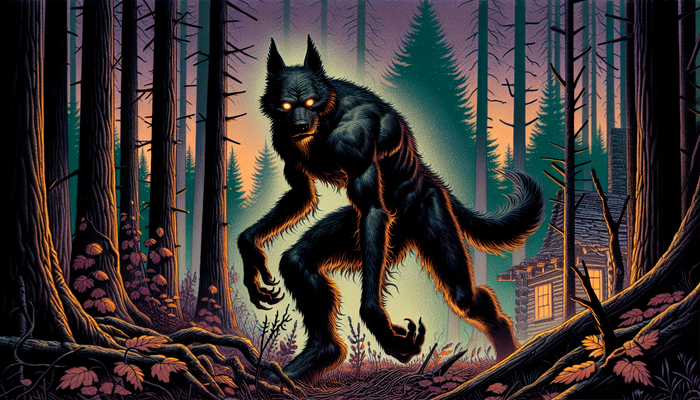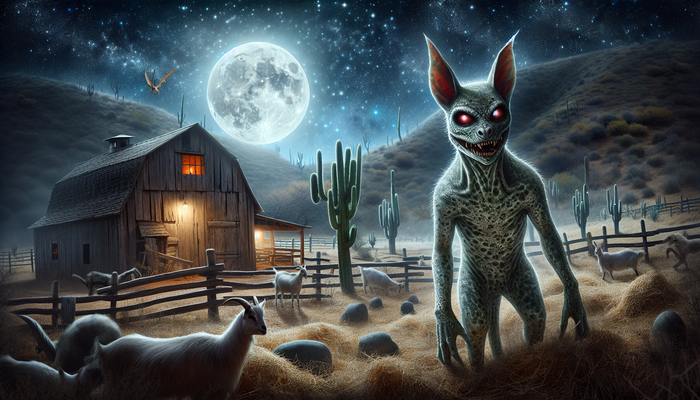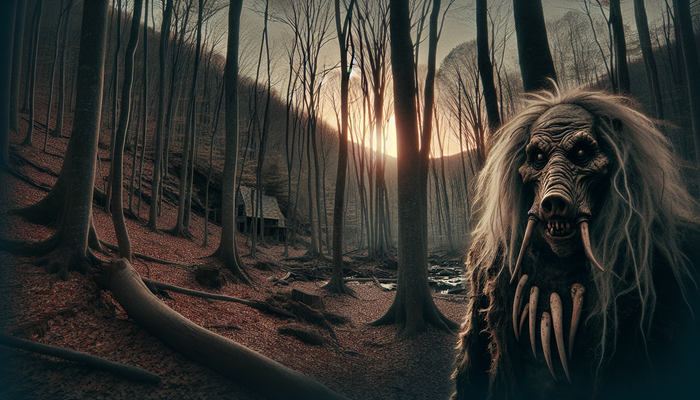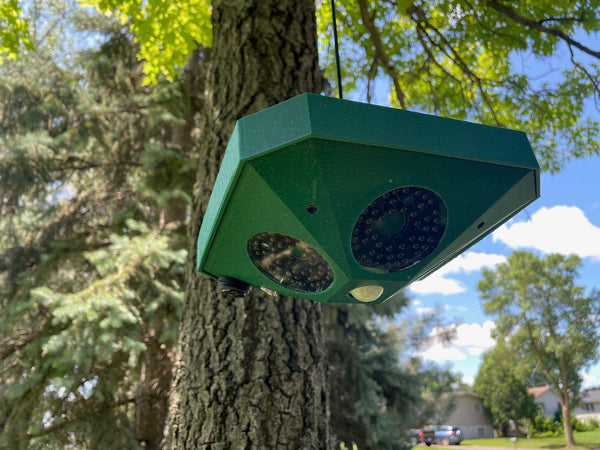Discover the Legend of the Snellygaster: Maryland's Mythical Creature
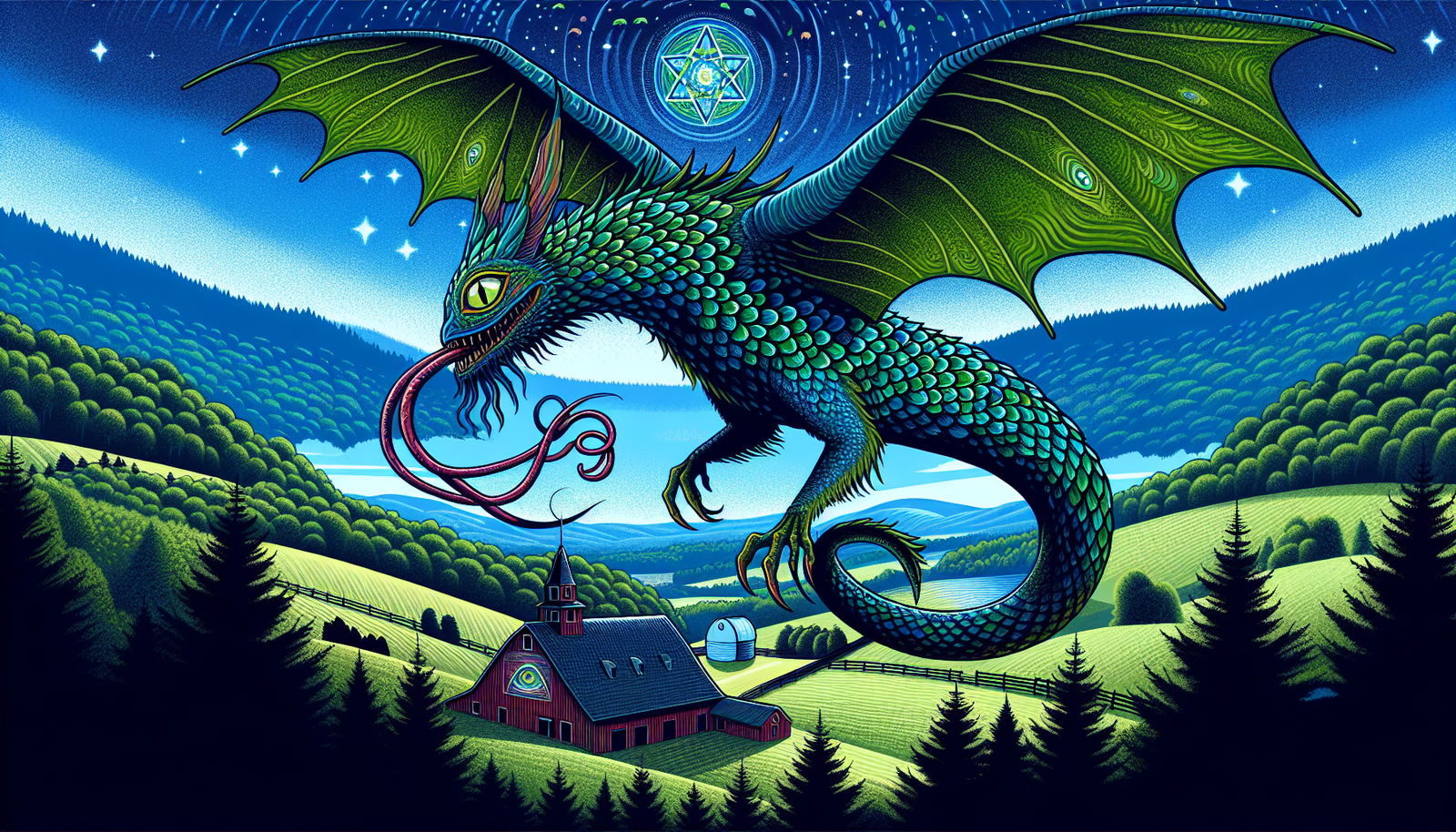
By James Roberts, Cryptozoologist
The Origins of the Snallygaster
In the misty hills of Frederick County, Maryland, a legend lurks that's as captivating as it is terrifying. The Snallygaster, a creature born from the whispers of German immigrants and nurtured by the fertile imagination of local folklore, has been haunting the dreams and fueling the fantasies of Marylanders for centuries. This isn't your average bump-in-the-night tale; it's a complex tapestry of cultural fears, media sensationalism, and the enduring human fascination with the unknown.
Picture this: a beast with the body of a reptile, the wings of a bird, and a beak lined with razor-sharp teeth. Oh, and don't forget the single eye in the center of its forehead or the octopus-like tentacles that some say protrude from its mouth. Sound like something out of a fever dream? Welcome to the world of the Snallygaster.
The name itself is a linguistic curiosity. "Snallygaster" is believed to be a corruption of the German term "Schneller Geist," which translates to "quick spirit." It's a fitting moniker for a creature said to swoop down from the sky with terrifying speed, snatching up its unsuspecting prey before vanishing into the night.
German Immigrant Influence
To understand the Snallygaster, we need to take a trip back in time to the 1730s, when German immigrants first settled in the Frederick County area. These newcomers brought with them not just their hopes for a new life, but also the rich folklore of their homeland. In the dense forests and rolling hills of Maryland, their old-world tales of spirits and monsters found fertile ground to take root and grow into something uniquely American.
The early stories of the Snallygaster were likely used as cautionary tales to keep children in line. "Don't wander too far from home," parents might have warned, "or the Snallygaster might get you!" It's a classic example of how folklore often serves a practical purpose in society, beyond mere entertainment.
Post-Civil War Era
However, as time went on, the legend of the Snallygaster took on a darker tone. In the post-Civil War era, it became intertwined with the racial tensions of the time. Some accounts suggest that the creature had a particular taste for African American victims, a chilling reflection of the very real dangers faced by Black communities in that period. This aspect of the legend serves as a stark reminder of how myths and monsters can sometimes be used to embody and perpetuate societal fears and prejudices.
The 1909 Media Frenzy
The Snallygaster might have remained a local curiosity, known only to the residents of Frederick County, if not for a series of events that thrust it into the national spotlight in 1909. It all started with a flurry of reported sightings, breathlessly recounted in the pages of the Middletown Valley Register. Suddenly, everyone was talking about the monster that was terrorizing the Maryland countryside.
One particularly vivid account described the creature as having "enormous wings, a long pointed bill, claws like steel hooks, and an eye in the center of its forehead." The writer went on to claim that it made screeches "like a locomotive whistle." Can you imagine the terror of hearing that sound pierce the night air?
These reports caught fire, spreading from local papers to national publications. Before long, the Snallygaster was the talk of the nation. The frenzy reached such a pitch that even the Smithsonian Institution got involved, reportedly offering a reward for the capture of the beast. And if that wasn't enough to cement the Snallygaster's place in American folklore, consider this: President Theodore Roosevelt himself was said to have considered postponing an African safari to hunt the creature.
Now, let's pause for a moment and consider the implications of this. The President of the United States, a man known for his love of adventure and big game hunting, was willing to put off a trip to Africa to chase down a monster in Maryland. That's how big this story had become.
Of course, no presidential monster hunt ever materialized, and the Snallygaster remained elusive. But the media frenzy of 1909 had done its work. The legend was now firmly established in the public imagination, ready to be resurrected whenever a slow news day called for a bit of sensationalism.
The Appearance of the Snallygaster
So, what exactly does a Snallygaster look like? Well, that depends on who you ask. The descriptions vary widely, which is part of what makes the legend so intriguing. Some accounts paint it as a dragon-like creature, while others lean more towards a bird of prey on steroids. The constant elements seem to be its fearsome appearance and its ability to strike terror into the hearts of those who encounter it.
Key Features
- Metallic Beak: One of the most consistent features in Snallygaster lore is its metallic beak. This isn't just any old beak; it's described as being razor-sharp and capable of tearing through flesh with ease. Some stories even claim that the beak is lined with teeth, adding an extra layer of horror to its already frightening visage.
- Steel-like Claws: Not content with just a deadly beak, the Snallygaster is said to possess claws "like steel hooks." These aren't for perching on tree branches; they're weapons, pure and simple. Imagine those claws descending from the sky, ready to snatch up an unsuspecting victim. It's the stuff of nightmares.
- Single Eye: Perhaps the most unsettling feature of the Snallygaster is its eye. Not eyes, mind you, but a single eye, located in the center of its forehead. This cyclopean aspect gives the creature an otherworldly, almost alien appearance. It's a detail that sets the Snallygaster apart from other cryptids and adds to its mystique.
- Tentacles: In some versions of the legend, the Snallygaster is said to have tentacles protruding from its mouth. This octopus-like feature seems to be a later addition to the myth, perhaps influenced by the cosmic horror stories of H.P. Lovecraft and his contemporaries. It's a testament to how folklore evolves over time, incorporating new elements that reflect changing cultural fears and fascinations.
Behavior and Diet
When it comes to behavior, the Snallygaster is portrayed as a cunning and vicious predator. It's said to be an ambush hunter, using its ability to fly silently to sneak up on its prey. Some stories describe it as lying in wait on the edges of forests or perched atop barns, ready to swoop down on anything that moves.
The creature's diet is another point of fascination in the lore. While some accounts have it preying on livestock, others give it a more sinister appetite. According to these tales, the Snallygaster has a particular taste for human blood. This vampire-like quality adds another layer of horror to the legend and links it to other blood-sucking monsters in global folklore.
The Snallygaster and Historical Events
One of the most intriguing aspects of the Snallygaster legend is how it intersects with real-world events and cultural shifts. Take, for example, the creature's alleged demise in 1932. The story goes that the Snallygaster met its end by drowning in a vat of moonshine. On the surface, this might seem like a fittingly bizarre end for a bizarre creature. But dig a little deeper, and you'll find that this tale is rich with historical context.
Prohibition Era
The early 1930s marked the end of Prohibition in the United States. During the Prohibition era, moonshine production was rampant, especially in rural areas like Frederick County. By having the Snallygaster die in a vat of illegal alcohol, the legend was tapping into very real concerns and activities of the time. It's a perfect example of how folklore often reflects and comments on the society that produces it.
But the story doesn't end there. According to the legend, before anyone could examine the Snallygaster's remains, revenue agents (the law enforcement officers tasked with enforcing Prohibition) showed up and destroyed both the moonshine still and the creature's body. This twist in the tale serves multiple purposes. It explains away the lack of physical evidence for the Snallygaster's existence, while also commenting on the heavy-handed tactics often employed by law enforcement during Prohibition.
Continued Sightings
Of course, like any good monster, the Snallygaster refused to stay dead. Reports of sightings continued sporadically over the years, keeping the legend alive in the public imagination. Each new sighting or story added to the mythos, sometimes contradicting earlier versions but always adding to the rich tapestry of the legend.
The Snallygaster and Folk Magic
One particularly interesting aspect of the Snallygaster lore is its connection to local folk magic practices. In some versions of the story, it's said that painting a seven-pointed star (known as a "hex sign") on a barn would ward off the creature. This detail links the Snallygaster to the tradition of Pennsylvania Dutch folk magic, which was prevalent in the region due to the large number of German immigrants.
These hex signs, which can still be seen on some barns in the area today, were originally used as protective symbols in German-American folk magic. By incorporating this element into the Snallygaster legend, the story becomes more than just a tale of a monster; it becomes a way of preserving and transmitting cultural practices and beliefs.
The Modern Snallygaster
As the 20th century progressed, the Snallygaster began to take on new roles in the cultural imagination. No longer just a local boogeyman, it became a symbol of the region's history and a point of pride for many Marylanders. The creature started appearing in works of fiction, documentaries about cryptids, and even in video games.
Pop Culture Appearances
One notable modern appearance of the Snallygaster is in the video game Fallout 76. In this post-apocalyptic game set in West Virginia, the Snallygaster appears as a mutated creature, the result of experiments with a fictional virus. While this interpretation takes significant liberties with the original legend, it demonstrates how folklore can be adapted and reinterpreted for new audiences.
Cryptozoology
The Snallygaster has also become a subject of interest for cryptozoologists, those who study animals whose existence is unproven. While most scientists dismiss the idea of a real Snallygaster, the creature's legend has been studied alongside other cryptids like Bigfoot and the Loch Ness Monster. This scientific interest, however skeptical, has helped to keep the legend alive and relevant in the modern era.
The Snallygaster Beer Festival
Perhaps the most interesting modern incarnation of the Snallygaster legend is the Snallygaster Beer Festival held annually in Washington D.C. This event, which draws thousands of attendees each year, is a celebration of craft beer that takes its name and inspiration from the legendary creature.
The festival, which features hundreds of different beers from breweries across the country, is more than just a drinking event. It's a way for the community to come together and celebrate their local folklore. The fact that a centuries-old legend can inspire a modern-day festival is a testament to the enduring power of folklore and its ability to adapt to changing times.
Fundraising for Sustainable Agriculture
What's particularly noteworthy about the Snallygaster Beer Festival is that it serves as a fundraiser for the Arcadia Center for Sustainable Food and Agriculture. This connection between a mythical creature, craft beer, and sustainable agriculture might seem odd at first glance, but it's actually a perfect encapsulation of how folklore can evolve to remain relevant.
The Arcadia Center works to create a more equitable and sustainable food system in the Washington D.C. area. By tying their fundraising efforts to the Snallygaster legend, they're tapping into a rich vein of local culture and history. It's a clever way to draw attention to their cause and to create a sense of community around their work.
Festival Highlights
The festival itself is a spectacle to behold. With over 350 different beers on offer, it's a paradise for craft beer enthusiasts. But it's not just about the beer. The event also features live music, food trucks, and various forms of entertainment. It's a celebration of local culture as much as it is a beer festival.
One of the most interesting aspects of the festival is how it has helped to introduce the Snallygaster legend to a new generation. Many attendees might come for the beer, but they leave with a newfound appreciation for this quirky piece of Maryland folklore. In this way, the festival is helping to keep the legend alive and relevant in the 21st century.
The Future of the Snallygaster
The Snallygaster's journey from terrifying monster to festival mascot is a fascinating example of how folklore evolves over time. What was once a tale meant to frighten children and enforce social norms has become a celebration of local culture and craft brewing. It's a transformation that says as much about our changing society as it does about the adaptability of folklore.
Proposed Snallygaster Museum
In recent years, there have been efforts to create a dedicated Snallygaster Museum in Maryland. While still in the planning stages, this proposed museum would serve as a repository for Snallygaster lore and a center for the study of local folklore.
The idea of a museum dedicated to a mythical creature might seem odd, but it's not without precedent. Similar museums exist for other cryptids, like the Bigfoot Discovery Museum in California or the International Cryptozoology Museum in Maine. These institutions serve not just as tourist attractions, but as centers for the study of folklore and its impact on local cultures.
A Snallygaster Museum could potentially house artifacts related to the legend, such as newspaper clippings from the 1909 sightings or examples of the hex signs used to ward off the creature. It could also serve as an educational resource, teaching visitors about the history of the region and the role that folklore plays in shaping cultural identity.
Moreover, such a museum could explore the darker aspects of the Snallygaster legend, including its connections to racial tensions in the post-Civil War era. By confronting these uncomfortable truths, the museum could serve as a tool for understanding and reconciling with the past.
Conclusion: The Enduring Appeal of the Snallygaster
As we look to the future, it's clear that the Snallygaster will continue to play a role in Maryland's cultural landscape. Whether it's through beer festivals, potential museums, or new reinterpretations in media, this legendary creature has proven its staying power.
But why does the Snallygaster continue to captivate us? Perhaps it's because, at its core, the legend speaks to something fundamental in the human experience. It's a story about the unknown, about the things that lurk just beyond the edge of our understanding. In a world where so much has been explained by science, the Snallygaster represents a lingering mystery, a reminder that there might still be wonders (or terrors) waiting to be discovered.
Or perhaps the enduring appeal of the Snallygaster lies in its adaptability. Over the centuries, it has been many things: a bogeyman to scare children, a reflection of societal fears, a subject of media sensation, and now, a beloved local mascot. This ability to change with the times while still retaining its essential "Snallygaster-ness" is what has allowed the legend to survive and thrive.
As we've seen, the Snallygaster is more than just a monster story. It's a window into the history and culture of Maryland, a reflection of changing societal norms and fears, and a testament to the enduring power of folklore. From its origins in the tales of German immigrants to its modern incarnation as a beer festival mascot, the Snallygaster has been a constant presence in the cultural life of the region.
Whether you're a skeptic who sees the Snallygaster as nothing more than a tall tale, or a true believer hoping to catch a glimpse of the beast on a dark night, there's no denying the impact this legend has had. It has inspired artists, intrigued researchers, and brought communities together. In doing so, it has earned its place not just in the annals of cryptozoology, but in the broader tapestry of American folklore.
So the next time you find yourself in Maryland, keep an eye on the sky. Listen for that locomotive-like screech. And if you happen to spot a winged creature with a metallic beak and a single eye... well, you might just have encountered the legendary Snallygaster. Just don't forget to raise a glass to this enduring piece of Maryland folklore at the next Snallygaster Beer Festival.
From Bigfoot to UFOs: Hangar 1 Publishing Has You Covered!
Explore Untold Stories: Venture into the world of UFOs, cryptids, Bigfoot, and beyond. Every story is a journey into the extraordinary.
Immersive Book Technology: Experience real videos, sights, and sounds within our books. Its not just reading; its an adventure.


